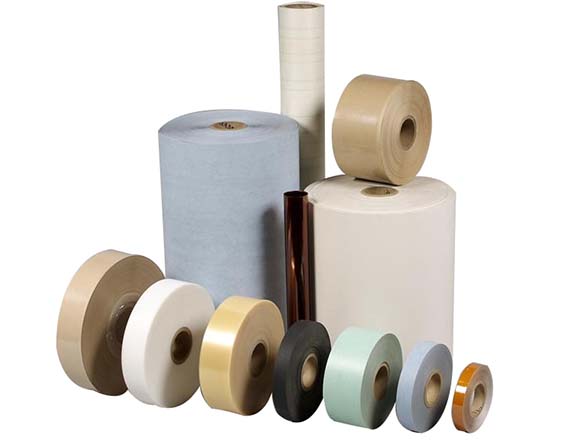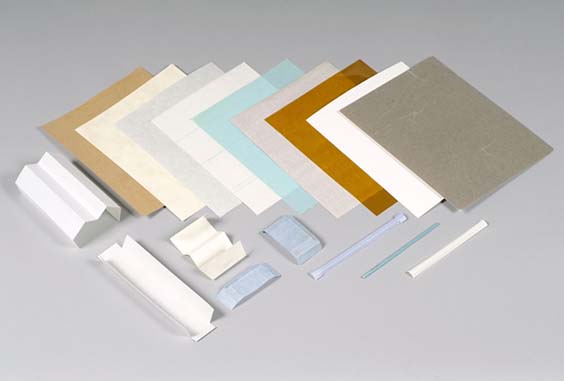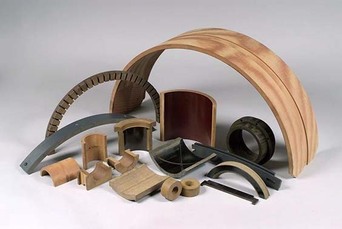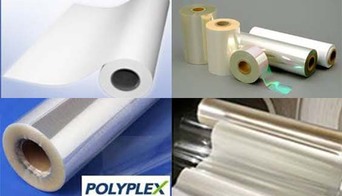Compare Sheet Only:
Compare Tube Only:
THE BENEFITS OF STAMPING & DIE CUTTING PLASTICS
In the fabrication industry, there are a number of methods used to shape and cut material to specification. For thin materials such as polyester, Nomex®, and plastic laminates and films, stamping and die-cutting are ideal fabrication tools for cutting and shaping.

POLYESTER FILMS
Polyester film or Polyethylene Terephthalate (PET) is a thin plastic film composed of terephthalic acid and ethylene glycol. The material’s clarity and rigidity, along with its ability to retain print make it an ideal material in the use of signage and displays. In addition, polyester film is extremely heat and chemical resistant, so it is an excellent option for use in high-temperature electrical insulation, oven-ready packaging, and labeling of hazardous materials.

NOMEX
Nomex is a rigid relative of the more familiar material nylon. Unlike nylon, Nomex is incredibly resistant to high temperatures, chemicals, and radiation. Thanks to these distinctive characteristics, Nomex has become a standard material for attire for firemen, race car drivers, military pilots, and astronauts. It is also used frequently as a filter material in exhaust systems for high-temperature industrial activities.

PLASTIC LAMINATES
Plastic laminates are flat sheets of paper, fabric, or cloth material impregnated with a plastic or polymer compound, and then layered using thermosetting techniques that bond multiple material layers into one sheet. The material comes in an array of colors and finishes and is impact-resistant, which makes it an attractive option for floors and countertops.

PLASTIC REFLECTIVE FILMS
Plastic reflective films are composed of thin plastic or polymers with a shiny outer coat or dark tint that reflects UV radiation and absorbs heat. The material is useful to regulate temperature and insulate from UV radiation damage.
APPLICATIONS FOR STAMPING & DIE CUTTING
With the number of versatile materials that can be shaped by stamping and die-cutting, it is no surprise that many products benefit from this method. Some equipment that uses stamped and die-cut materials include:
- Insulators for motors
- Generators
- Transformers or electric devices
- Reflective films
- LED lenses
FABRICATION METHODS
Within the realm of stamping and die-cutting, there are a number of techniques and methods used to achieve different results depending on the application:
STEEL RULE
A steel rule is custom shaped thin metal blade used to punch a shape into materials on a flat die board. It is typically used for soft materials, such as cork, cardboard, or rubber. Materials that are too brittle are likely to break when force is applied to stamp the material. A steel rule can accommodate larger sheets of material than a rotary die cutter.
ROTARY DIE CUTTING
Rotary die cutting uses a custom cylindrical die that is rolled over the material to cut the desired shape. This is a versatile option for cutting multiple custom shapes from one piece of material. For this process, the material is placed flat on the work surface, and the cylindrical die is rolled over the material, cutting the custom shapes repeatedly into the material with each rotation.
Rotary die-cutting is an excellent method for material conservation, as multiple shapes can be cut from the same piece of material. It is also a time-efficient means of producing exact duplicate parts on a large scale. However, the size of sheet material that can be used is limited based on the rotary die’s capacity.
On the other hand, flatbed die cutting allows for larger sheets to be printed at one time. It is a slower process than rotary die-cutting and requires more manual attention, as a flatbed die-cutter cannot be automated to the same extent as a rotary die cutter.
PUNCH PRESSING
A punch press is the mechanical component of a stamp or die cutter that pushes against the material to be shaped by the die in order to “punch” the shapes out of the material. It operates from above and parallels to the surface on which the die and material are superimposed. The press is then pushed down on the material, allowing the die to cut the material from the bottom into the appropriate shape.
SLITTING OPERATIONS
Slitting operations are a means of cutting wide rolls of material to a narrower width, particularly for thin materials that are easy to cut with a metal blade. Roll splitting services use slitting to cut wide, unwieldy rolls to a more manageable width to make them usable in press and printing operations.
STAMPING & DIE CUTTING AT WS HAMPSHIRE
At WS Hampshire, we offer a variety of quality stamping and die cutting services for all your business needs. For more information on our expert fabrication services or to get started on your next project, contact us today and request a quote!
Flexible Part Fabrication Capabilities
- Operations
Steel Rule
Rotary Die CuttingPunch Press
Slitting
- Automation Capabilities
Manual
- Additional Services
In-House Custom Built Dies
In-House Tooling and Fixturing
Hot Bending
- Material Thickness
0.001 to 0.125 in
- Press Tonnage
3 to 75 tons
- Maximum Width
54 in
- Minimum Slit Width
0.170 in
- Maximum Outside Diameter (OD)
25 in
- Tolerance (+/-)
+/_ 0.005 in
- Maximum Part Weight/Maximum Lifting Capacity
1000 lbs
- Fabrication Process
Bending
Folding
Forming
Printing
PunchingRolling
Rotary Die cutting
Shearing
Slitting
Stamping
- Materials (Metals)
Kraft Paper
Kraft / Polyester laminates
Kraft Boards
Copaco
Rag/Mylar Laminates
Polyester Film
Nomex & Nomex LaminatesTufquin & Tufquin Laminates
Cequin & Cequin Laminates
DMD
Kapton
Mica
Glass Polyester
- Additional Services Provided
Part Design Recommendations
Material selection / recommendations
Reverse Engineering
- Typical Products
Flexible electrical insulation
Thermal Barrier papers/films
- Production Volume
One min
unlimited max
Specialty Production Shop
Prototype
Low VolumeSmall Run
High Volume
Large Run
Long Run
Large Scale Production Volume Run
- Lead Times Available
2 – 3 weeks on repeat production parts
4 – 6 weeks on new partsQuoted on job by job basis
Expedite services available
- Industry Focus
Motors
Generators
TransformersLighting Ballasts
Electronic Devices
- Industry Standards
ANSI
American National Standards Institute
CE
The CE mark (officially CE marking) is a mandatory conformity mark on many products placed on the single market in the European Economic Area (EEA).
CSA
Canadian Standards Association
Mil-Spec
Military Specifications
RoHS
Restriction Of Hazardous Substances (Compliant)
- Efficiency
Lean Manufacturing
- File Formats
#4 Preferred – AutoCAD (DWG,DWZ)
# 3 Preferred – DXF
Drawing Interchange Format, or Drawing Exchange Format
GIF
Graphics Interchange Format
#2 Preferred – IGES
Initial Graphics Exchange Specification, ANSI file format.
JPG or JEPG
Joint Photographic Experts Group
PDF
Portable Document Format
#1 preferred – SolidWorks (SLDPRT, PRT)
TIFF
Tagged Image File Format
- Machine Manufacturers
Niagara
Pratt & Whitney
DenisonSamco
Preco
Dusenberry

